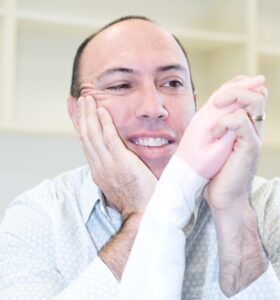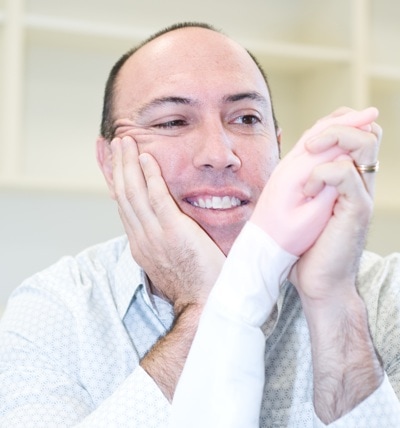Some of you have no doubt heard the phrase ‘pain doesn’t exist until you feel it’. This phrase refers to the dependence that pain has on being conscious. One might suggest that we would be better placed to solve the pain problem if we first solved the consciousness problem. What is the consciousness problem? Well, it is what many cognitive neuroscientists and philosophers would call the final frontier – how does the brain produce consciousness? What are the mechanisms that underpin it? Well, the reasonably recent American Association for Psychological Science congress ran a theme programme on this very topic and made the surprising claim that consciousness is not the mystery it used to be. There were four speakers. I will try to summarise their messages here. Richard Davidson from Wisconsin at Madison does EEG and fMRI experiments in healthy volunteers including expert meditators. He observes what happens to the physiological signal (the EEG or fMRI) when the experts fill their mind with love and compassion. He can clearly differentiate the love – it coincides with a shift in gamma oscillations in EEG and in brain oxygenation patters in fMRI. He also shows that daily meditation can make you more altruistic, improve your performance on reaction time tasks and improve your immune responses. Now, these experiments are not without criticisms – it is very difficult to conjure a placebo intervention that controls for all EXCEPT the meditation bit – but they seem to suggest that when you can meditate, your brain can work differently. Solving the consciousness problem? I don’t reckon.
The second speaker, Giulio Tononi, made the astute observation that knowing where something happens doesn’t explain how it happens. He presented this ‘integrated information theory’, which seems to claim that consciousness is determined by a single system that selects which of an almost infinite number of states will be selected to determine your conscious one. This sounds rather like Ron Melzack’s neuromatrix theory – that a ‘sentient neural hub’ sends a stream of ‘experience’ that bifurcates to send the motor command (or perhaps the efferent commands) that are consistent with that experience. That is, you don’t ‘experience’ walking because you are walking, but because this sentient neural hub tells you to both ‘walk’ and ‘experience walking’. That idea caters for those times when you experience walking without actually walking – for example in dreams. Back to Tononi – he couldn’t resist the whole anatomy thing in the end – he said that his theory explained why the cerebellum doesn’t seem to be involved in consciousness – because it is not involved in storing the repertoire of experiences upon which your brain draws when it selects the one that fits. Particularly relevant to us is an almost closing point he made – that infants, because they have fewer experiences in their repertoire, have a lesser capacity or diversity of consciousness. How then, does a baby first feel pain? Is that something that is built in and therefore available from the get-go? I will leave that one with you. Anyway, has Tononi solved the consciousness problem? I don’t reckon.
Next up was Stanislas Dehaene from INSERM. He has a global neuronal workspace hypothesis, which posits that consciousness is determined by what information is currently available in working memory. That is, the brain is accumulating sensory and other evidence, knocking it around – ‘discussing it amongst its different high-level processing areas’ until it arrives on a single interpretation and it is that interpretation that can be maintained and held in working memory. Thus, it is that one that is our conscious experience. Dehaene backed up his theory with physiological data too. Solving consciousness? I don’t reckon.
Finally, Antonio Damasio went over his ideas of ‘the feelings of what happens’ but spent some time on singing the virtues of the brainstem in consciousness. He certainly downplayed the role of the insula – in particular citing clinical cases of perfectly conscious people with big fat insula lesions. The brainstem certainly gets a fair mention in pain studies, but it is only really referred to as a modulator of nociception. Could it be the long lost seat of consciousness and therefore of pain? Well it is hard to imagine a brainstem, sitting on a pillow, conscious. It is intriguing too that one expert is backing the neocortex as the producer of consciousness and another the brainstem – couldn’t get much further apart and still stay in the brain. What if we learn that it is not even about neurones – perhaps there really is a little man inside my brain, sitting in the pineal gland a la Rene Descartes. I bet he like chocolate.
There is no doubt that these four eminent neuroscientists are terrifically clever and have made contributions beyond what I will ever make – they are the ‘real deal’, so to speak. I wonder, however, whether they would really support the claim that there workshop shows us that consciousness is not the mystery it used to be. It seems to me that we still have absolutely no idea how consciousness emerges from all these physiological processes. And there is the rub – if we don’t know how ANYTHING really becomes conscious, then we are not quickly going to know how pain does. Bummer.
About Lorimer Moseley
 Lorimer is NHMRC Senior Research Fellow with twenty years clinical experience working with people in pain. After spending some time as a Nuffield Medical Research Fellow at Oxford University he returned to Australia in 2009 to take up an NHMRC Senior Research Fellowship at Neuroscience Research Australia (NeuRA). In 2011, he was appointed Professor of Clinical Neurosciences & the Inaugural Chair in Physiotherapy at the University of South Australia, Adelaide. He runs the Body in Mind research groups. He is the only Clinical Scientist to have knocked over a water tank tower in Outback Australia.
Lorimer is NHMRC Senior Research Fellow with twenty years clinical experience working with people in pain. After spending some time as a Nuffield Medical Research Fellow at Oxford University he returned to Australia in 2009 to take up an NHMRC Senior Research Fellowship at Neuroscience Research Australia (NeuRA). In 2011, he was appointed Professor of Clinical Neurosciences & the Inaugural Chair in Physiotherapy at the University of South Australia, Adelaide. He runs the Body in Mind research groups. He is the only Clinical Scientist to have knocked over a water tank tower in Outback Australia.
Link to Lorimer’s published research here. Downloadable PDFs here.



